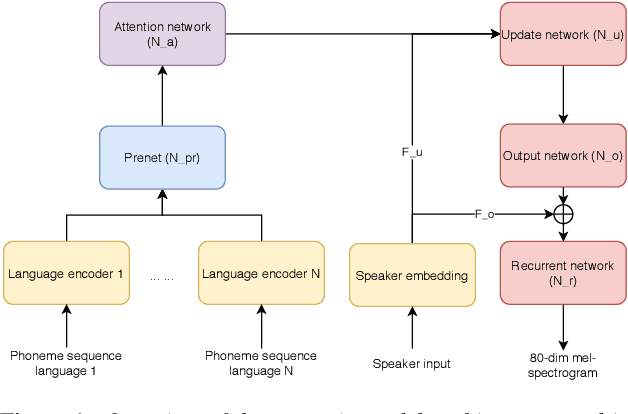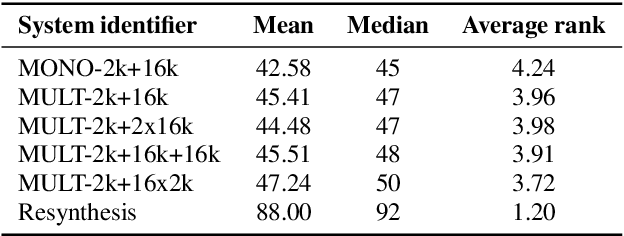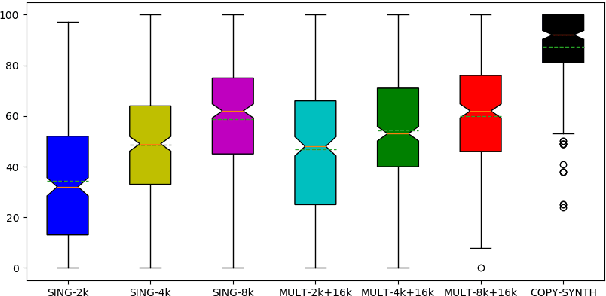Efficient neural speech synthesis for low-resource languages through multilingual modeling
Paper and Code
Aug 20, 2020


Recent advances in neural TTS have led to models that can produce high-quality synthetic speech. However, these models typically require large amounts of training data, which can make it costly to produce a new voice with the desired quality. Although multi-speaker modeling can reduce the data requirements necessary for a new voice, this approach is usually not viable for many low-resource languages for which abundant multi-speaker data is not available. In this paper, we therefore investigated to what extent multilingual multi-speaker modeling can be an alternative to monolingual multi-speaker modeling, and explored how data from foreign languages may best be combined with low-resource language data. We found that multilingual modeling can increase the naturalness of low-resource language speech, showed that multilingual models can produce speech with a naturalness comparable to monolingual multi-speaker models, and saw that the target language naturalness was affected by the strategy used to add foreign language data.
 Add to Chrome
Add to Chrome Add to Firefox
Add to Firefox Add to Edge
Add to Edge